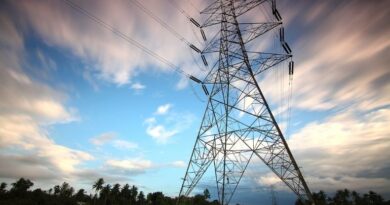Utility-scale solar makes up nearly 30% of new U.S. electricity generation in 2020 Renewables as a whole reach 78% of 2020 electricity additions
Renewable energy sources accounted for 78.09% of new utility-scale electrical generating capacity added to the U.S. grid in 2020, according to a review of FERC data by the SUN DAY Campaign.
FERC’s latest monthly “Energy Infrastructure Update” report found that 28,751 MW of new utility-scale capacity was added last year, with renewable sources accounting for 22,451 MW. Wind (13,626 MW) and solar (8,543 MW) each contributed more new generating capacity than did natural gas (6,259 MW). Natural gas accounted for 21.77% of the total, with very small contributions by coal (30 MW), oil (6 MW), and “other” sources (5 MW) providing the balance. There were no new capacity additions by nuclear power or geothermal energy during the year.
Wind farms added 5,004 MW in December alone and provided nearly half (47.39%) of the new capacity for the year. Solar accounted for 29.71% of new generating capacity. Combined with a small amount of hydropower, wind and solar were the only new sources of new generating capacity during six (June through November) of the 12 months of 2020
Renewable energy sources now account for 24.06% of the nation’s total available installed generating capacity and continue to expand their lead over coal (19.65%) and nuclear power (8.57%). The generating capacity of just wind (9.83%) is nearly one-tenth of the nation’s total while wind and solar combined account for 14.15% (not including residential solar).
Ten years ago, FERC reported that installed renewable energy generating capacity was 13.71% of the nation’s total. Five years later, it had increased to 17.83%. With current capacity now at 24.06%, renewables now appear to be on track to reach — and likely exceed — 30% of the nation’s total generating capacity by 2025.
The mix of all renewables is expected to add more than 59,308 MW of net new generating capacity to the nation’s total by December 2023 while the net new capacity from natural gas, coal, oil, and nuclear power combined will actually drop by more than 15,400 MW.
If FERC’s projections prove accurate, over the next three years, renewable energy generating capacity should account for comfortably more than one-quarter of the nation’s total available installed generating capacity – increasing to 27.92%. Meanwhile, coal’s share will drop to 17.07%, nuclear’s to 7.93%, and oil’s to 2.76%. Natural gas’ share will also decline slightly to 44.15%, compared to 44.33% now.
In fact, renewables’ share could — and probably will — be even higher. Over the past 23 months, FERC has been regularly increasing its renewable energy projections in the monthly “Infrastructure” reports. FERC’s first such projection — provided in its March 2019 report — forecast the addition of 36,608 MW of wind and solar during the ensuing three years. In its most recent report, those forecasts had grown to 58,629 MW of new solar and wind capacity by December 2023.
“Renewable energy sources – especially wind and solar – dominated new capacity additions for yet another year, continuing the nearly unbroken pattern of the past half-decade,” noted Ken Bossong, Executive Director of the SUN DAY Campaign. “Now, with a very supportive Biden Administration and Democratic majorities in the U.S. Senate and House of Representatives, renewables are clearly on course to become the foundation of the nation’s electricity supply.”
News item from SUN DAY
<!–
–>
Original Source: https://www.solarpowerworldonline.com/2021/02/utility-scale-solar-makes-up-nearly-30-of-new-u-s-electricity-generation-in-2020/













